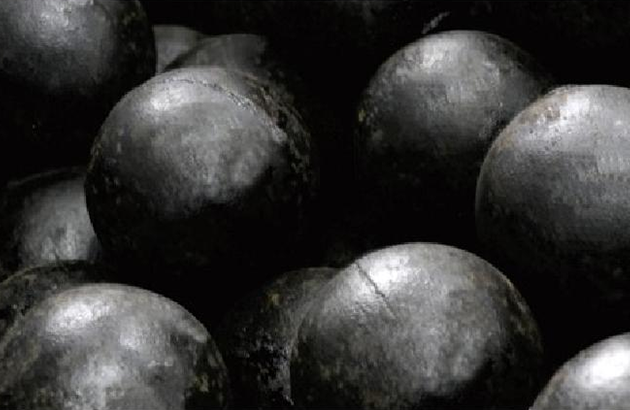
+86 0563-4309002
+86 17705630058
vickyw@gaoxincn.com
Top Benefits of Using Wear-Resistant Grinding Balls in Heavy Industry
Maximizing Efficiency, Reducing Costs, and Extending Equipment Lifespan
In heavy industry sectors such as mining, cement production, metallurgy, and thermal power, grinding is a fundamental process for size reduction. This operation relies heavily on the use of grinding balls, which act as the main media for pulverizing raw materials. However, not all grinding balls are created equal—wear-resistant grinding balls offer a unique advantage by delivering long-term durability, improved performance, and substantial cost savings.
This comprehensive article explores the top benefits of using wear-resistant grinding balls across heavy industries. We will examine how these specialized media influence equipment life, energy efficiency, operational stability, and overall production output.
Wear-resistant grinding balls are specially engineered to withstand high abrasion, impact, and heat in intense industrial environments. They are typically made from advanced alloy steels, high-chromium cast irons, or other heat-treated materials designed for extreme durability.
High hardness and toughness
Low wear rate
Resistance to deformation, spalling, and breakage
Chemically stable under heat and corrosion
Long service life in both wet and dry grinding conditions
These qualities make wear-resistant grinding balls ideal for the most demanding milling processes where frequent replacement and downtime must be minimized.
Wear-resistant grinding balls are used in a variety of grinding mills, including:
Ball mills
SAG mills (Semi-Autogenous Grinding)
Rod mills
Vertical roller mills
Mining: For crushing and grinding ores to liberate valuable minerals.
Cement: For reducing clinker and raw material into fine cement powder.
Thermal power: For grinding coal to fine dust for combustion.
Chemical processing: Where fine particle grinding is critical for reactions.
One of the most prominent benefits of using wear-resistant grinding balls is their extended service life.
Lower replacement frequency
Reduced media consumption
Consistent grinding performance over time
In standard operating environments, wear-resistant balls last significantly longer than ordinary cast or forged balls. This reduces costs associated with frequent replenishment and inventory management.
Frequent grinding media replacement disrupts operations and demands labor-intensive maintenance. Wear-resistant balls, due to their hardness and stability, reduce these interruptions.
Fewer shutdowns
Less frequent mill relining
Improved mill availability
By extending intervals between maintenance cycles, plant operators experience more consistent production and lower operational expenditure.
High wear-resistance allows grinding balls to maintain their shape and weight for longer periods, resulting in more effective energy transfer in the grinding process.
Better impact force on raw material
More uniform size reduction
Shorter grinding cycles
These efficiency gains translate into higher throughput, especially in ore beneficiation and cement grinding, where throughput directly affects profitability.

Grinding is one of the most energy-intensive operations in heavy industry. Up to 40–50% of a plant’s total energy can be consumed in grinding alone.
Wear-resistant grinding balls contribute to lower power requirements by:
Ensuring optimal ball-to-material contact
Reducing energy loss due to deformed or irregular media
Maintaining consistent motion inside the mill
Even marginal gains in energy efficiency can yield major savings over time, particularly in large-scale operations.
Grinding balls with poor wear resistance often break or chip, introducing metal fragments into the product and affecting particle size consistency.
Wear-resistant balls help ensure:
Clean, uncontaminated material output
Uniform particle distribution
Stable chemical composition of final products
This is especially crucial in:
Cement production, where particle fineness affects strength
Mineral processing, where liberation is required for separation
Chemical reactions, where consistency is critical
Heavy industry environments are often aggressive, featuring high temperatures, corrosive chemicals, and abrasive materials. Wear-resistant grinding balls are manufactured to endure these harsh conditions.
Operate effectively in both acidic and alkaline environments
Resist oxidation and corrosion in moist grinding conditions
Maintain structural integrity under thermal shock
This reliability in harsh environments allows continuous operation without special media management protocols.
The stability of wear-resistant balls supports better mill behavior, reducing vibration, overloads, and erratic grinding patterns.
Steady motor load
More efficient ball movement
Lower liner wear due to reduced ball breakage
This helps optimize mill operation parameters, ensuring maximum material processing and reduced energy waste.
The cumulative effect of using wear-resistant grinding balls is a noticeable reduction in long-term operating costs.
Media replacement
Maintenance labor and downtime
Power consumption
Equipment wear and tear
Though wear-resistant grinding media may cost more initially, their lifecycle cost is substantially lower, providing excellent return on investment (ROI).
Sustainable industrial practices are increasingly important. Wear-resistant balls support this by:
Reducing raw material waste
Minimizing production of scrap and reject material
Lowering energy use and CO? emissions
Their long lifespan means fewer resources consumed in manufacturing, shipping, and disposal.
Wear-resistant grinding balls are versatile and can be used in various mill types and materials, including:
Clinker
Iron ore
Copper ore
Limestone
Coal
Industrial slag
This adaptability makes them ideal for industries running multiple grinding operations.
Wear-resistant grinding balls are more than just durable media—they are strategic tools for improving the entire performance of heavy industrial operations. By extending service life, improving energy transfer, and reducing total costs, these grinding balls offer substantial advantages over traditional options.
Comment
(0)